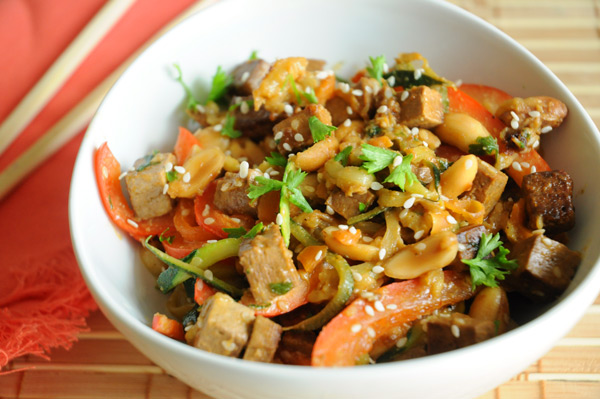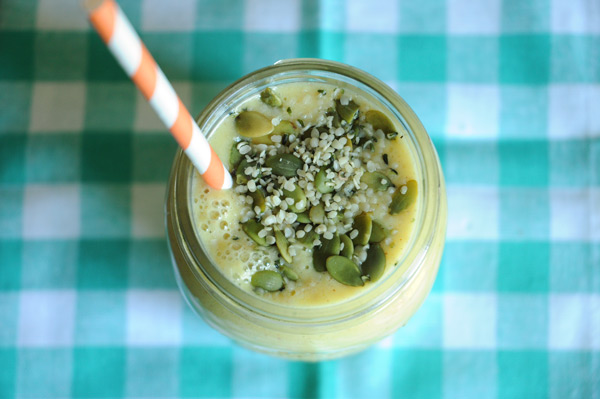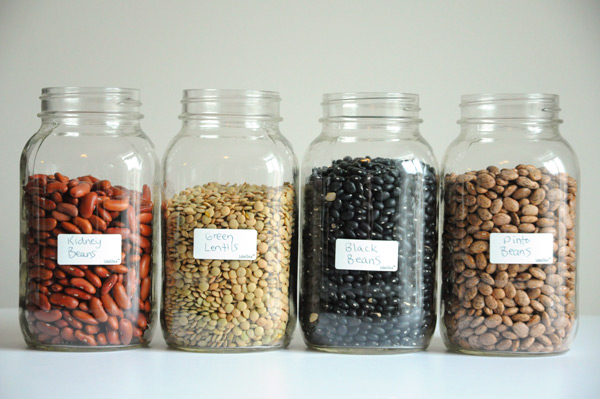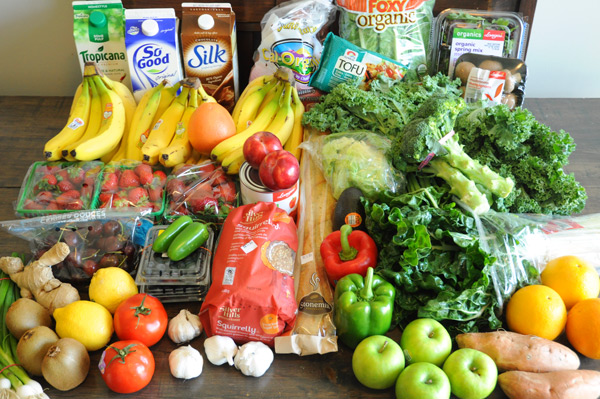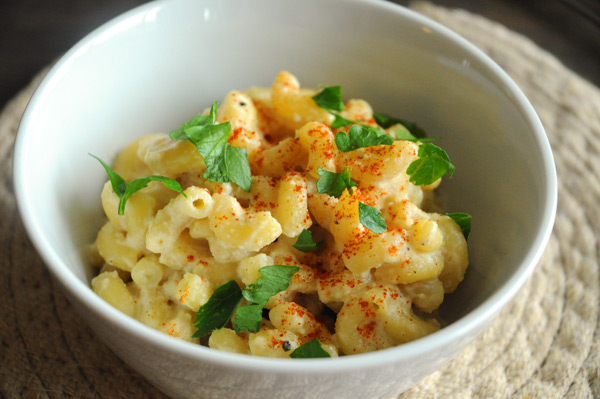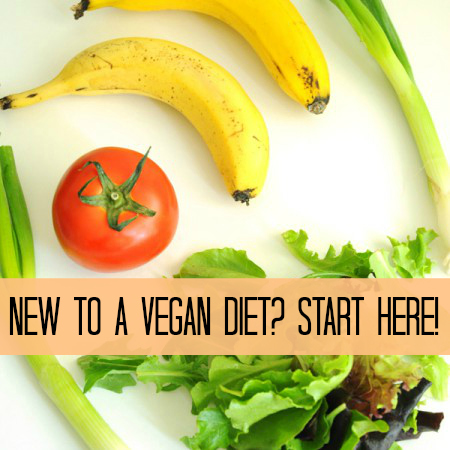 Wondering about a vegan diet? What’s involved, what do you eat, how do you stay healthy? Well, for starters, let’s get the basics out of the way. A vegan diet means that you don’t consume any animal products at all.
Wondering about a vegan diet? What’s involved, what do you eat, how do you stay healthy? Well, for starters, let’s get the basics out of the way. A vegan diet means that you don’t consume any animal products at all.
This includes:
- Animal Milk – May increase risk of fractures by 50%, more likely to get osteoporosis, may raise cancer risk, heavily processed.
- Dairy (Yogurt, Cheese, Butter, etc.) – Casein is one of the most significant cancer promoters ever discovered. Cheese is addictive. Contain a ton of cholesterol and saturated fat. Dairy is constipating. Highly processed.
- Meat – High in saturated fat and cholesterol. High in calories which can lead to weight gain. Increases changes of colon cancer. Hard on your digestive system. Carries the highest risk of bacterial contamination. Containes drugs that were given to the animal. Meat production leads to wasted resources (such as land and water).
- Honey – Bees are enslaved, and the queen bee is killed about every 2 years. This is done to exert control over the hive. It prevents aggression and keeps honey production at a maximum. Plus, honey is bee vomit. Vomit. From a bee. Gross.
- Eggs – Slow down digestion and hard to digest (especially egg whites). Eggs have been linked with heart failure, as well as type 2 diabetes. Contains an excessive amount of cholesterol.
The benefits of a vegan diet:
- Reduced saturated fats in your diet.
- Eliminates all dietary cholesterol from your diet.
- Weight loss.
- Longer lifespan (those following a vegan diet live an average of 3-6 years longer than those who don’t).
- Reduces body odor and bad breath.
- Healthier hair, skin and nails.
- Higher energy levels.
- Every vegan saves an average of 100 animal lives each year.
- Easier to fight off colds (if you ever get them at all!).
What is the difference between being vegan and eating a vegan diet?
A vegan is someone who avoids all animal products altogether. This includes, food, beverages, leather, fur and wool. Vegans also avoid items that have been tested on animals, such as health & beauty items and household cleaners.
A vegan diet means that you avoid all animal foods & drinks. You may or may not still use animals tested on products and you may or may not still purchase items that contain leather, fur and/or wool.
Why does someone switch to a vegan diet and/or become vegan? It may be due to allergies, compassion for animals, the health benefits, or a combination of the three. In the end, it’s a very personal choice, and one that you cannot make for others, but only for yourself.
How to Get the Proper Nutrition on a Vegan Diet
Just because you’ve given up animal products, doesn’t mean you’re automatically on the road to good health. In fact, if you’re not careful, you can actually get very sick eating a vegan diet – unless you do it properly.
Since you will be eliminating a bunch of food from your diet that was giving you vitamins your body needs (along with the other bad stuff that your body doesn’t need), you will need to make sure you’re replacing those foods with plant-based foods that contain the same vitamins.
Sources of plant-based protein:
- Tempeh (19g in just under 1/2 cup)
- Lentils (9g in just under 1/2 cup)
- Tofu (8g in just under 1/2 cup)
- Peanut Butter (8g in 2 tbsp)
- Quinoa (14g in just under 1/2 cup)
- Soy Milk (3.3g in just under 1/2 cup)
- Pumpkin Seeds (19g in 100g)
- Roasted Almonds (21g in just under 1/2 cup)
- Pine Nuts (14g in 100g)
- Peanuts (26g in just under 1/2 cup)
- Brown Rice (2.6g in just under 1/2 cup)
- Corn (9g in just under 1/2 cup)
- Pistachios (20g in 100g)
- Sunflower Seeds (21g in 100g)
- Cashews (18g in just under 1/2 cup)
- Flax Seeds (18g in 100g)
- Sun-dried tomatoes (14g in 100g)
- Seitan (75g in just under 1/2 cup)
- Avocado (2g in 100g)
- Black Beans (22g in just under 1/2 cup)
- Chia Seeds (17g in 100g)
- Barley (12g in just under 1/2 cup)
- Kidney Beans (9g in just under 1/2 cup)
- Edemame, Cooked (11g in just under 1/2 cup)
- Blackeyed Peas (3g in just under 1/2 cup)
- Navy Beans (8g in just under 1/2 cup)
- Peas (5g in just under 1/2 cup)
- Lima Beans, Boiled (8g in just under 1/2 cup)
- Spinach (2.9g in just under 1/2 cup)
- Broccoli (2.8g in just under 1/2 cup)
- Asparagus (2.2g in just under 1/2 cup)
- Potatoes(2g in just under 1/2 cup)
- Brussels Sprouts (3.4g in just under 1/2 cup)
- Oats (17g in just under 1/2 cup)
- Kale (4.3g in just under 1/2 cup)
- Chickpeas/Garbanzo Beans (19g in just under 1/2 cup)
- Walnuts (15g in just under 1/2 cup)
- Sprouted Grain Bagels, Buns, etc. (varies)
- Whole Wheat Pasta (varies)
- Buckwheat (13g in just under 1/2 cup)
- Couscous (3,8g in just under 1/2 cup)
- Bulgur (12g in just under 1/2 cup)
- Millet (2.8g in just under 1/2 cup)
- Whole Wheat Bread (13g in 100g)
Sources of plant-based calcium:
- Amaranth (27mg in 1 cup)
- Navy Beans (125mg in 1 cup)
- Roasted Sesame Seeds (35mg in 1oz.)
- Artichoke (55mg in 1 medium)
- Dates (35mg in 1/2 cup)
- Figs (120mg in 1/2 cup)
- Oranges (55mg in 1 medium orange)
- Blackberries (40mg in 1 cup)
- Raw Fennel (115mg in 1 medium bulb)
- Broccoli (95mg in 1 cup )
- Almond Butter (85mg in 2 tbsp.)
- Tahini (130mg in 2 tbsp.)
- Fortified Orange Juice (300mg in 1 cup)
- Hemp Milk (460mg in 1 cup)
- Kale (180mg in 1 cup)
- Collar Greens (350mg in 1 cup)
- Blackstrap Molasses (300mg in 2 tbsp.)
- Tempeh (215mg in 1 cup)
- Fortified Non-Dairy Milk, excluding Hemp (200-300mg in 1 cup)
Sources of plant-based iron:
- Lentils (3mg in 1/2 cup)
- Tomato Paste (3.9mg in 1/2 cup)
- Quinoa (4mg in 1/2 cup)
- Prune Juice (3mg in 1 cup)
- Cooked Spinach (3.2mg in 1/2 cup)
- White Beans (3.9mg in 1/2 cup)
- Spirulina (5mg in 1 tsp.)
- Cooked Soybeans (4.4mg in 1/2 cup)
- Pumpkin Seeds (4.2mg in 2 tbsp.)
- Blackstrap Molasses (4mg in 1 tbsp.)
Tip: Eat iron-rich foods with foods containing vitamin C, which helps the body absorb the iron better.
Sources of plant-based vitamin D:
- Rice or Soymilk Fortified with Vitamin D
- Vegan Cereals Fortified with Vitamin D
- Orange Juice Fortified with Vitamin D
- Tofu Fortified with Vitamin D
- Raw White Mushrooms
Sources of plant-based vitamin B12:
- Nutritional Yeast (7.8mcg in 16g)
- Fortified Non-Dairy Milk
- Fortified Vegan Cereals
Sources of plant-based Omega-3s:
- Flaxseeds (6.3g in 1/4 cup)
- Flaxseed Oil (53,300mg in 100g)
- Leafy Green Vegetables (100mg in 1/2 cup cooked spinach, kale, dandelion greens and collard greens)
- Canola Oil (9,137mg in 100g)
- Poppy Seeds (100mg in 1oz.)
- Pistachios (100mg in 1oz.)
- Sesame Seeds (100mg in 1oz.)
- Pumpkin Seeds (100mg in 1oz.)
- Basil (315mg in 1 cup)
- Walnuts (2.5g in 1/2 cup)
- Cauliflower (210mg in 1 cup)
- Brussels Sprouts (173mg in 1 cup)
- Winter Squash (0.2g in 1 cup)
How to transition to a vegan diet
For many people, switching to a vegan diet is hard. That may be the case for you. But – there are a few ways to make that transition go a bit smoother.
First, remember that you don’t have to eliminate ALL animal products right away if that seems to extreme for you. Start out by eliminating meat. Once you’re comfortable with that, eliminate eggs. Then dairy. Then honey. (Not necessarily in that order, of course). One thing at a time, until you rid your diet of all animal products.
Secondly, expect to detox. After a few days of having zero animal products in your body, you will likely experience headaches/body aches, nausea, diarrhea, fatigue, low energy and last but not least, extreme cravings for the foods you have eliminated from your diet. Not everyone will go through detox, but many do. When it hits, the best thing to do, is lie down in a cool, dark room, and sleep it off. Detox commonly lasts as little as a few hours and ask much as a few days.
What can I buy on a vegan diet?
There are many things that you can eat and drink – in fact, there is quite a bit more than many people think! Here are some items that are often on my vegan shopping list:
Vegetables:
- Green Leafy Vegetables
- Broccoli & Cauliflower
- Carrots
- Mushrooms
- Edemame
- Peppers
- Squash
- Onions & Potatoes
- Tomatoes
- Cucumbers
- Celery
Fruits:
- Melons
- Berries
- Bananas
- Apples & Oranges
- Frozen Fruit (for smoothies)
- Lemons & Limes
- Dried Fruit
- Avocado
Cooking/Baking:
- Tofu
- Pasta, Rice, Quinoa
- Oats
- Fresh Herbs
- Flour (Kamut, Spelt, Whole Wheat, Buckwheat)
- Ground Flax Seed (to make flax eggs)
- Nutritional Yeast
- Agave & Maple Syrup
Refrigerated:
- Dairy-Free Milk (Almond, Soy, Hemp)
- Dairy-Free Yogurt (Almond, Coconut, Soy)
- Orange Juice
Everything Else:
- Whole Wheat or Sprouted Grain Bread
- Nuts (Almonds, Cashews, Peanuts, Walnuts, Hazelnuts)
- Beans & Legumes (Chickpeas, Black Beans, Kidney Beans, Lentils)
- Tortillas
- Seeds (Pumpkin, Sesame, Flax, Sunflower, Chia)
If you’re just starting out with a vegan diet, and suffering from the most common cravings, cheese & meat, try the following products, but try to use them sparingly, because they are highly processed:
- Vegan Cheese Shreds (Daiya, Tofutti, Follow Your Heart)
- Vegan Cream Cheese (Daiya, Go Veggie!, Toffuti)
- Vegan Cheese Slices (Daiya, Follow Your Heart, Go Veggie!, Toffuti)
- Sausages (Field Roast, Tofurky)
- Burgers (Field Roast)
- Vegan Ground “Beef” (Tofurky)
- Hot Dogs (Tofurky)
How to eat vegan on a budget
Many people believe that if they switch to a vegan diet, they will be spending more money, and this is not necessarily true. In the beginning, it may be a bit more costly than what you usually spend on groceries, but that’s because you are likely purchasing items you have never bought before, or not often, like nutritional yeast, flax seeds, cashews, agave and tahini.
These are items that you will not be purchasing every week, so if you buy all of that stuff in one shopping trip, then yes, the cost is going to seem very high.
However, if the bulk of your groceries is produce every week, you will likely end up spending less than what you spent pre-vegan. Plus, things like rice, beans, potatoes, and pasta are all very cheap! Unlike meat, dairy and cheese. There are a few more ways you can save money on your vegan groceries, too:
- Shop at farmer’s markets – Shop right before closing and ask for crazy deals. Many will say yes, just to get rid of stuff.
- Shop online – Sites like Amazon and Nuts.com are great examples. Watch for sales, and stock up when you can!
- Shop the sales – Each week, many stores put out new sales and you can see these by looking at their flyer online. Stock up on the sale items you regularly use, and purchase only the sale produce that is at a discount. In season produce is almost always your best bet.
- Price match – Whenever possible, price match your groceries at a store that allows price matching. Get the best deals from various stores, but shop just at one! Save time and money.
- Consider a Costco membership – There are so many organic, vegan groceries available at Costco these days, and the prices are lower than almost any other source you can find. Stock up on nuts, rice, quinoa, agave, maple syrup, hummus, avocados, dates, salad greens, frozen fruit & veggies, oats, vanilla, hemp seeds, coconut water and much, much more! The cost of a Costco membership is well worth it for the the savings you’ll get!
- Skip organic – Of course, I highly recommend only purchasing organic groceries, but if you simply cannot afford to do so, then generic will suffice. Just make sure you wash all of your produce very, very well to get rid of pesticides.
- Buy store-brand – Oftentimes, store-brand products are better than their name brand counterparts. And the best part? They’re almost always cheaper! This is especially true for baking supplies, pasta, rice, beans and oats.
- Cook from scratch – This will always save you more money, and it’s better for you, too! Set aside some time once per week to prepare a bunch of your food for the days ahead (quinoa, rice, pasta, beans, muffins, breads – these are some items that are easy to make and keep in the fridge for a few days until you need it.
- Avoid vegan substitutes – In the beginning, it’s okay to buy some of these items, just to get you over the cravings hump, but after that, try to keep them out of your shopping cart, as they are highly processed and very expensive. They’re easy to make yourself anyway!
Kitchen supplies you need
Although you don’t need any fancy kitchen tools when you switch to a vegan diet, there are some things that will make your life easier. Some are inexpensive and some are not, but the following kitchen supplies have been helpful to me in my transition to a vegan diet.
- High-Powered Blender – I use a Blendtec blender that I bought on sale at Costco. It makes fantastic smoothies and super creamy cheeses and sauces. It also makes an incredible banana “ice cream”? I’ve heard good things about Vitamix, and the Ninja blender is the cheapest of all 3 blenders and it does a great job, as well.
- Food Processor – If you can’t afford a high-powered blender, a good quality food processor is the next best thing. These are also great for making your own flours, taco “meat”, nut butters, parmesan “cheese” and more!
- Pots & Pans – You’re going to be doing a lot of cooking, so make sure you have a variety of different pots and pans that are at your disposal. I’ve used Paderno for years and love the quality.
- High Quality Chef’s Knife – This is essential. Invest in a good quality knife, since this is what you will be using for the majority of your cooking. A quality paring knife is a good idea, too!
- Salad Spinner – With the amount of leafy greens I eat, one of my most-used kitchen tools is my salad spinner. After I wash my greens, I just put them in the salad spinner and in just a minute or two, I have dry leaves that are ready for storage in the fridge (or to eat)!
- Cutting Board – One is enough, but multiple cutting boards is best. These guys get lots of use, so you’re going to want to have at least one that is of good quality.
- Mixing Bowls – A few mixing bowls in various sizes should be good, and at least one of them should be very large.
There are a million other tools you can use to make your life easier, but these are just what have helped me the most and what I recommend to others.
What’s in my vegan pantry
 Many new vegans email me and ask what I keep in my vegan pantry, so I thought I should post some photos and details of the food that I keep on hand at all times. These are the foods, spices and baking items that I always have in my kitchen because I use them so often.
Many new vegans email me and ask what I keep in my vegan pantry, so I thought I should post some photos and details of the food that I keep on hand at all times. These are the foods, spices and baking items that I always have in my kitchen because I use them so often.
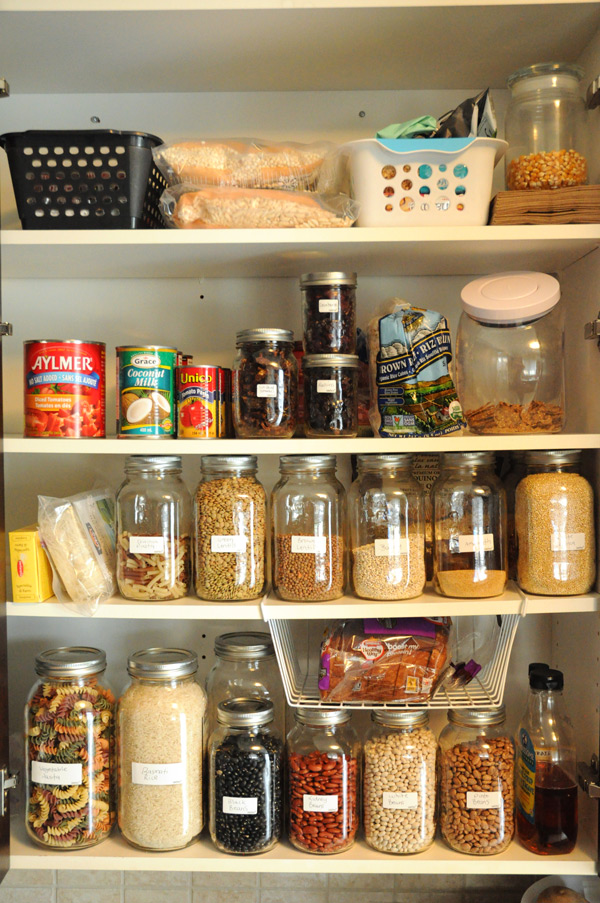 You can read my vegan pantry post here for all the details about everything I keep in my pantry.
You can read my vegan pantry post here for all the details about everything I keep in my pantry.
